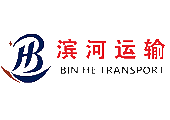Common sense for handling checked luggage
Time:2019-12-10 17:05:57 Reading:3355
Common sense for handling checked luggage:
First, in order to ensure that your checked luggage is delivered to its destination accurately and in a timely manner, the packaging of luggage and parcels must be complete, strong and suitable for transportation. All lockable suitcases, travel bags and handbags must be locked; the ropes must be tied tightly, and do not hit live buckles. One item is bundled into one, and two or more items cannot be bundled into one piece. For textiles, clothing, daily necessities, cigarettes, high-end medicines, etc., if packed in a carton, there must be suitable inner packaging inside the box, which should be filled in layers. Reinforcement. Fragile goods, liquid goods, metal and other heavy goods, as well as household appliances, must be packed with hard materials such as wooden boxes and crates. "Handle with care", "Do not invert" and other marks. Animals, poultry and other animals must be placed in solid cages, and feces should not leak out. The volume of each piece of luggage or package must not be less than 0.01 cubic meters, which is too small and easy to lose. Of course, it should not be too large, and the maximum weight of each item cannot exceed 50 kg.
Second, when handling railway luggage consignment, write down the unit, name, and address of the station, consignor and consignee on the checked baggage and parcel. The font should be as large as possible. Better. Pay attention to fill in the labels carefully column by column and must not be omitted. A tag should be attached to each end of a piece of luggage or parcel. The tags should be fastened to prevent the label from falling off and causing the separation of the ticket and the cargo. You should carefully fill in the baggage and parcel consignment note, and complete and truthful. Checked baggage is subject to a valid ticket, and each ticket can be checked once, but there are no restrictions on the number of disabled cars.
Common sense for handling railway freight:
▲ The types of railway cargo transportation are divided into vehicle, LTL and container. The weight, volume or shape of a batch of goods requires more than one train to be transported as a whole vehicle; if the transport conditions are not sufficient for the whole vehicle, it is to be transported as a less-than-truckload; The minimum consignment volume of a consignment shall not be less than 0.02 cubic meters, and each batch shall not exceed 300 pieces.
▲ According to a batch of consignments, the shipper, consignee, departure station, arrival station and loading and unloading place must be the same. Each vehicle is a batch. The goods for straddle loading, climbing loading and use of recreational vehicles are in a batch for each vehicle group. For less-than-truckload cargo or cargo transported in containers, each cargo waybill is a batch. Goods transported in containers must be of the same box type, at least one box, and the maximum number of boxes that can be carried by a railway wagon.
▲ When the shipper or consignee's representative or the entrusted agent handles the consignment, collection, change or fulfillment of other rights and obligations, he should submit a power of attorney or a letter of introduction to the station.
▲ Consignment of goods by any railway shall be concluded with the carrier.
▲ The station accepts goods according to the approved car-request plan and purchase plan. For disaster relief materials, materials directly used in agricultural production, fresh goods, art performance supplies, moving goods, and other materials that need urgent transportation should be prioritized, and the on-demand business also includes LTL.
▲ When the shipper delivers the goods to the carrier, he shall submit a cargo waybill to the station in batches. The shipper has too many product names for each batch of consignments and cannot fill in the consignment note or consign the moving goods one by one and there are more than two kinds of goods in the same package, and must submit a list of the articles in triplicate. The shipper shall be fully responsible for the authenticity of the items recorded in the goods waybill and the list of articles, and shall make a concealment, misstate the name of the goods, and pay the liquidated damages in accordance with the regulations.
▲ When shipping perishable goods and "short-lived" radioactive goods, the allowable transport period of the goods should be noted. The allowable shipping period must be at least three days longer than the delivery period of the goods.
▲ The shipper should check the goods according to the nature of the goods, weight, type of transportation, transportation distance, climate, and loading of the truck, and use transportation packaging that meets the transportation requirements to facilitate loading and unloading and ensure the safety of the cargo. Where there is no uniform stipulation on packaging standards, the station shall work with the shipper to study and formulate temporary standards for the packaging of goods for transportation, and jointly implement them.
▲ The consignor shall show clear and conspicuous marks on each piece of cargo when consigning less-than-truckload cargo. Checked baggage, in addition to the use of cloth, wood, metal and other tough materials such as tags or writing marks, and should be placed inside the packaging.
▲ Railway cargo is carried according to the number and weight.
▲ Freight transportation costs are calculated in accordance with the "Rail Freight Freight Rules". The shipper shall pay the fee on the day the cargo is carried at the station. When the shipper or the consignee pays the transportation fee late, it shall pay the carrier the prescribed late miscellaneous fee.
